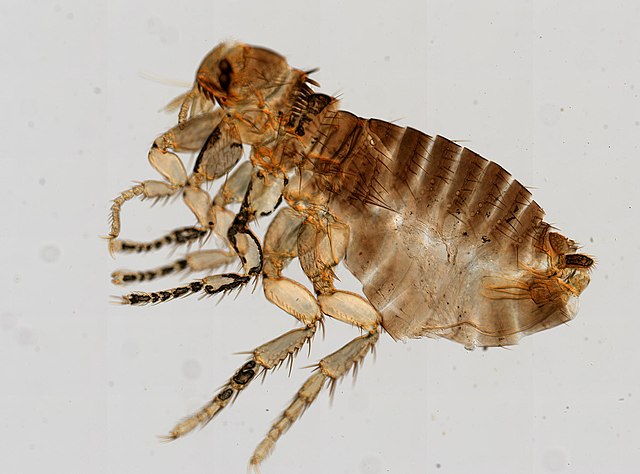The 10 Most Similar Bugs to Bedbugs

Accurate insect identification is essential when managing troublesome pests such as bed bugs. We'll look at ten different species of bugs that resemble bed bugs in this article.
Understanding these differences can help alleviate concerns and facilitate proper pest management.
Carpet Beetles
They're small, oval-shaped insects. Because of their size and colour, they're often mistaken for bed bugs. However, carpet beetles don't feed on blood. They consume wool, silk, and organic materials such as hair and skin flakes. Carpet beetles often appear in carpets, furniture, and clothing.
In addition, the bodies of carpet beetle larvae are covered in bristles. Bed bugs lack these hairs. Carpet beetles don't pose a threat to humans, but their hairs can irritate those who have allergies. They can damage fabrics and other organic materials, though.
Spider Beetles
Spider beetles have a similar shape and colour to bed bugs. They are reddish-brown. This causes mistaken identity. However, spider beetles have longer legs and antennae compared to bed bugs. These scavengers eat many kinds of organic materials. These include dried food, dead insects, and animal droppings. But, they do not eat human blood.
They're notorious for scavenging. Besides infesting stored food, they contaminate it with their faeces. You need proper food storage. You also need good sanitation. These are essential for preventing spider beetles. They also minimise the risk of food contamination. Regularly inspect and clean pantries.
Booklice
They usually inhabit damp, humid spaces like bathrooms and cellars. This requires attention to stop mould and fungi. Good ventilation, dehumidification, and moisture control can deter booklice. They also maintain a healthy indoor environment. Their look is similar to that of bed bug nymphs, however they have no the typical reddish-brown hue. Booklice feeds on mould, fungi, and debris, not blood. They are harmless but unwelcome in homes.
Bat Bugs
Bat bugs look a lot like bed bugs. They also act like bed bugs. Both species feed on blood and infest living spaces. However, bat bugs primarily feed on bats and are typically found in bat roosts or nesting sites. Bat bugs can bite humans if bats are absent. But, they do not set up long-term indoor infestations and are less common than bed bugs.
Also, bat bugs are more common in structures where bats live. These include attics, barns, and caves. Their presence in homes may mean there are bats nearby. This requires inspection and exclusion to stop more pests. You may need professional bed bug control services. They can address bat infestations and eliminate pests like bat bugs.
Swallow Bugs
Swallow bugs are like bat bugs. They are blood-feeding insects that closely resemble bed bugs. They mainly infest bird nests, especially those of swallows. But, they may enter homes to find other hosts. Swallow bugs can bite humans. But, they do not create indoor infestations like bed bugs.
Also, swallow bugs are more common in areas with many birds. These areas include rural places or buildings near water. They are in homes when birds nest. They seek shelter and hosts to eat. Sealing entry points stops swallow bugs from entering. Using exclusion measures can also help. It can also stop them from establishing infestations.
Fleas
They feed on bird and mammal blood. Fleas share some similarities with bed bugs. These include their flat bodies and reddish-brown colour. But, they have distinct differences. Unlike bed bugs, fleas have powerful hind legs for jumping. Pets and bedding get infested with fleas. They do not infest where people sleep.
Also, fleas are often found outdoors. This is especially true in areas visited by wildlife or pets. It's possible for pets to bring fleas into the house unintentionally. There's a chance carpets, upholstery, and bedding will get infested. To control fleas, you should groom pets. Hoover often and use flea treatments indoors and outdoors.
Cockroach Nymphs
Bed bug nymphs can easily be mistaken for cockroach nymphs. Their colours and sizes are similar. Nymphs of cockroaches have long bodies and antennae. This sets them apart from bed bugs. Cockroaches are linked with dirt. They can spread diseases. Bed bugs can't.
Also, cockroach infestations are often known for live insects. You'll see their droppings and smell a musty odour in affected areas. Good sanitation and exclusion are vital. They prevent cockroach infestations and reduce health risks. Sealing cracks and crevices is key. So is getting rid of food and water sources and keeping things clean. These are the main strategies for cockroach control in homes.
Bird Mites
Bird mites are tiny arachnids. They feed on bird blood, especially from poultry and wild birds. These pests may accidentally enter homes from bird nests or roosting sites. This can lead to infestations. Itchy skin can be caused by bird mites. But, they are not adapted to long-term survival indoors like bed bugs.
Also, bird mites are more common in homes near bird nests or bird populations. They may be there when birds are nesting. Mites seek hosts to feed and breed. Removing bird nests helps. And, putting up barriers can prevent bird mites. These steps protect people from bites and discomfort.
Ticks
The tick is a blood-feeding parasite. Outdoor environments like woods and grasslands are common for them. Ticks may sometimes enter homes on clothing or pets. But, they look and act differently from bed bugs. Ticks have a round body. They spread diseases like Lyme disease and Rocky Mountain spotted fever.
Also, tick bites are typically painless. You may not notice them until disease symptoms appear. Good tick prevention measures include wearing protective clothing and using repellents. Also, do thorough tick checks after outdoor activities. Picking off ticks quickly helps cut disease risk. It also stops home infestations.
Spider Mites
Tiny arachnids called spider mites consume plant sap instead of blood. They may bite humans. But, they are not adapted to feeding on human blood like bed bugs. Both indoor and outdoor plants are frequently attacked by these pests. They can destroy plants, but they do not pose a threat to people.
Also, spider mites are common in dry, warm places. They can become a problem in greenhouses, gardens, and indoor plant collections. Spider mites cause stippled or discoloured leaves. You can also see fine webbing on plants and reduced plant vigour. You can control spider mites effectively by using integrated pest management. This includes regular monitoring. It also includes cutting off infested plant parts. The use of horticultural oils is another option, as well as the use of insecticidal soaps.
In Conclusion
These ten insects look like bed bugs and act like them. They live in similar places. But, they are different species with unique diets and roles in ecosystems. By understanding these differences, and by talking to pest managers when needed, homeowners can solve pest issues well and fast. This ensures a comfortable, pest-free living environment.




